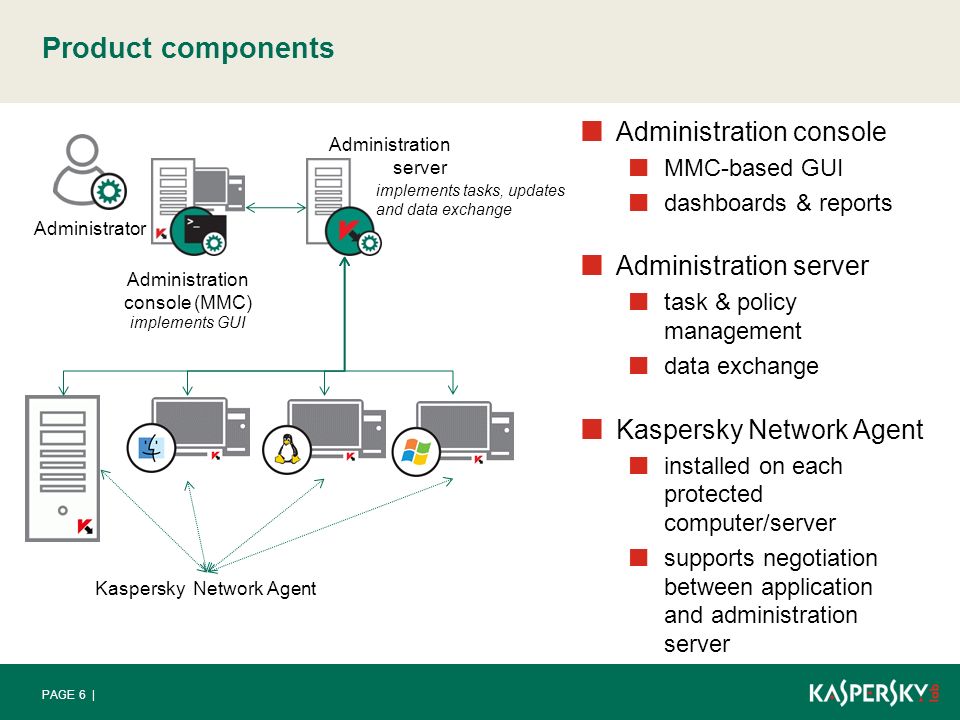

- #INSTALL KASPERSKY SECURITY CENTER SLAVE SERVER WINDOWS 10#
- #INSTALL KASPERSKY SECURITY CENTER SLAVE SERVER DOWNLOAD#
- #INSTALL KASPERSKY SECURITY CENTER SLAVE SERVER WINDOWS#
#INSTALL KASPERSKY SECURITY CENTER SLAVE SERVER DOWNLOAD#
You can work with trace files, download system information and event logs, start and stop applications on a client device, and generate reports. You can perform remote diagnostics of the client devices. In both cases, you must have a Kaspersky utility named klsctunnel.

#INSTALL KASPERSKY SECURITY CENTER SLAVE SERVER WINDOWS#
You can obtain remote access to the desktop of a client device through a Network Agent installed on the device (remote connection to a device through the Network Agent is possible even if the TCP and UDP ports of the client device are closed) or through Windows Desktop Sharing. Connecting to a client device through Windows Desktop Sharing.Remote connection to the desktop of a client device.You can run the Cloud Environment Configuration Wizard, which performs the initial protection configuration for the cloud devices, and perform other operations with the cloud segments you can also create Backup of the Administration Server data task using a DBMS located in a cloud environment. You can deploy Kaspersky Security Center in cloud environments such as Amazon Web Services, Microsoft Azure, and Google Cloud (this requires a special license). The following features are added to the Kaspersky Security Center 12.1 Web Console: Kaspersky Security Center 12.1 Web Console
#INSTALL KASPERSKY SECURITY CENTER SLAVE SERVER WINDOWS 10#
Kaspersky Security Center 12.1 now works with Microsoft Windows 10 20H1 32-bit/64-bit (Administration Server, Network Agent, Administration Console, and Kaspersky Security Center 12.1 Web Console). Kaspersky Security Center 12 includes several new features and improvements.


 0 kommentar(er)
0 kommentar(er)
